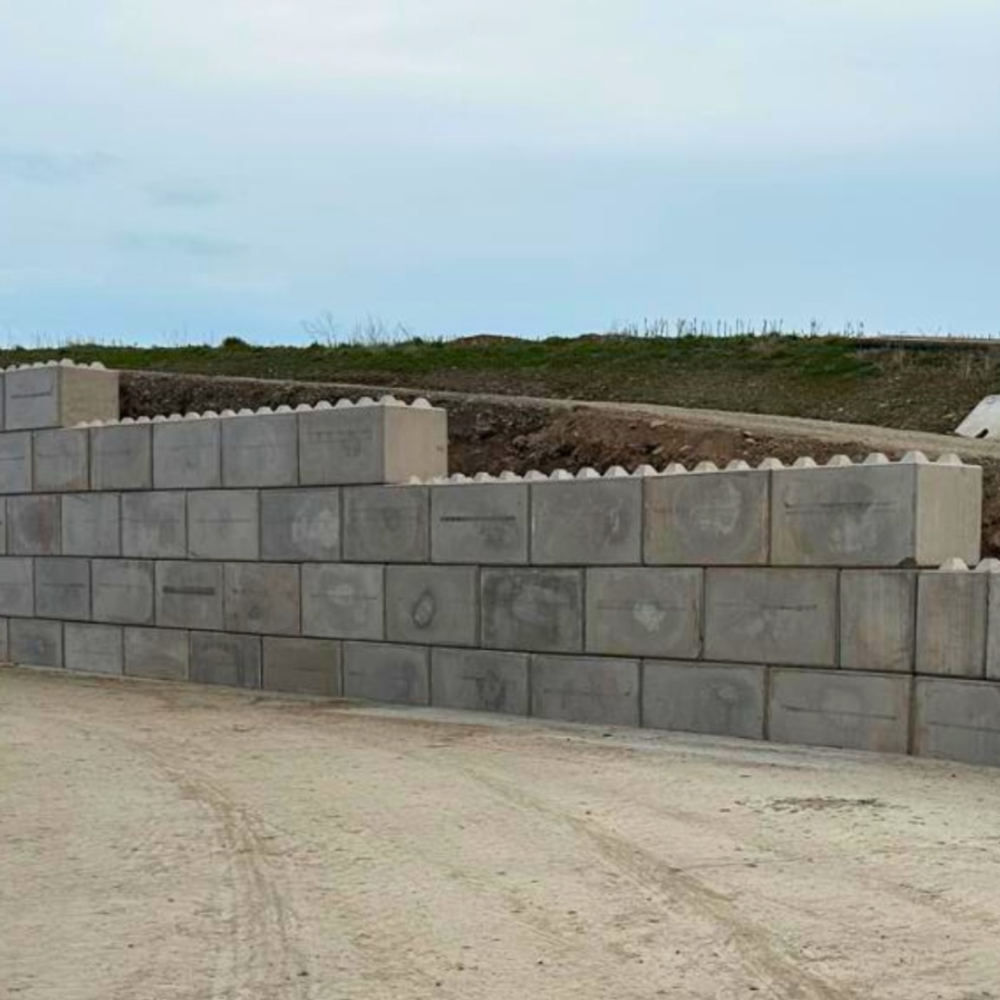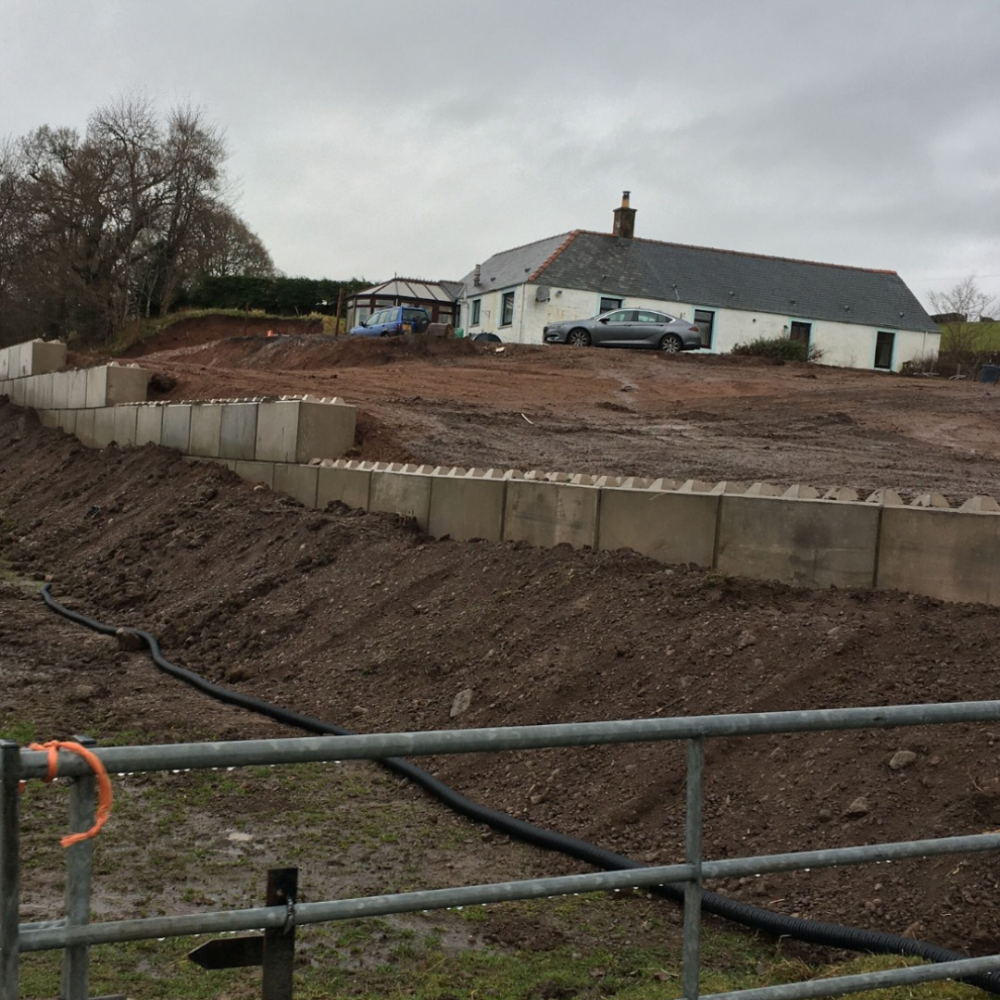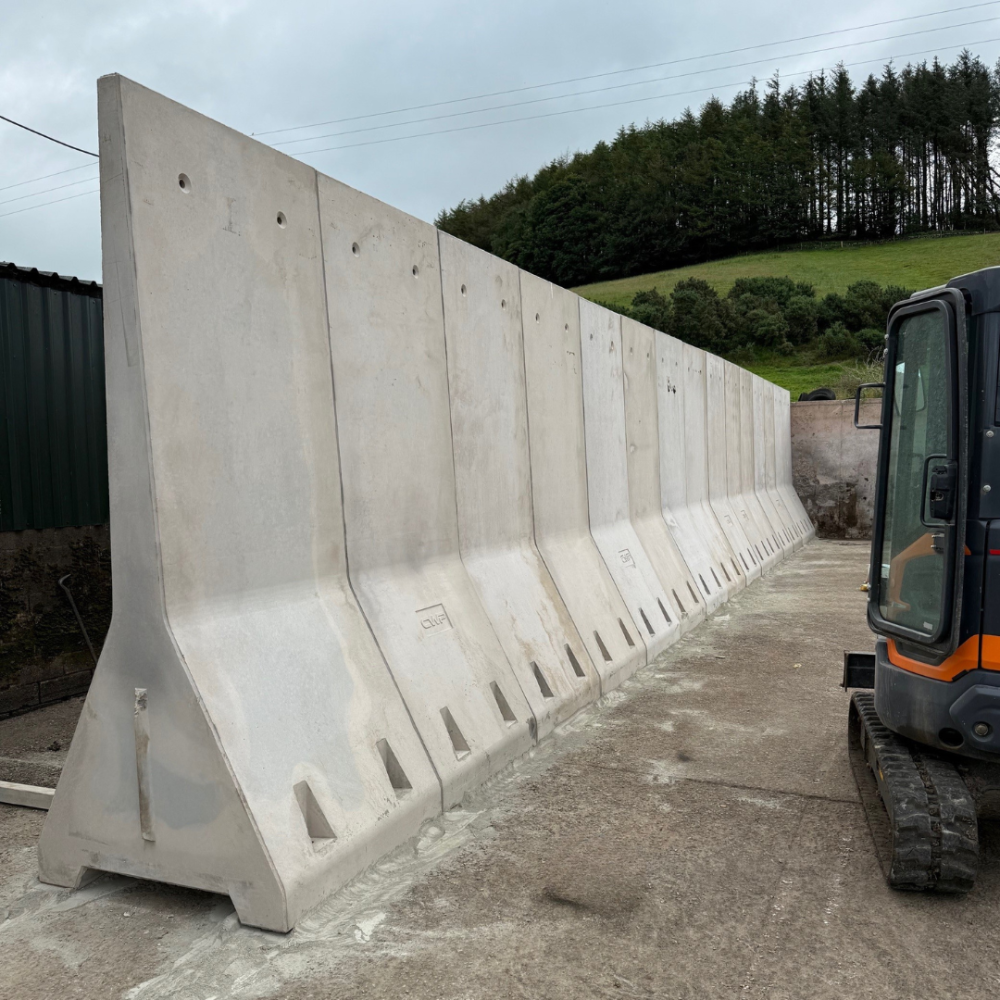If you’re looking for a strong and reliable way to hold back soil, manage slopes, or create level ground, precast concrete retaining walls are a smart choice.
They’re tough, cost-effective, and quick to install.
At CWP, we make high-quality precast retaining walls that are built to last and suitable for all kinds of projects.
Whether you’re stabilising a slope, building terraces, or dealing with drainage, the right retaining wall can make all the difference.

Why choose precast concrete retaining walls?
Compared to traditional poured concrete or other materials, precast walls offer several key benefits:
- Fast installation – Precast units arrive ready to put in place, saving time and labour costs.
- Consistent quality – Made in controlled factory conditions, so you get reliable strength and a clean finish every time.
- Built to last – With proper installation, precast walls can stand strong for decades with little maintenance.
- All-weather installation – Unlike poured concrete, precast isn’t as affected by weather delays.

Types of precast concrete retaining walls
Interlocking concrete blocks
These blocks fit neatly together to form a stable wall.
Benefits:
- Simple and quick to install, often with minimal equipment
- Can create straight or curved walls
- Good natural drainage when installed correctly
- Cost-effective for medium-height walls
- Flexible enough to cope with slight ground movement
Best for: Landscaping, residential projects, and commercial sites where appearance matters.

A Walls
Shaped like the letter “A,” these walls are designed to stand on their own without extra support.
Benefits:
- Self-supporting design makes installation easier
- Very stable thanks to their wide base
- Great where there’s little room behind the wall
- Quick to install
- Available in different heights
Best for: Roadworks, industrial sites, or projects needing strong, space-saving walls.

L Walls
With a vertical face and a horizontal base, L walls are strong and stable.
Benefits:
- The backfill weight helps anchor the wall
- Strong but efficient in material use
- Suitable for taller walls
- Clean, professional look
- Can be fitted with drainage systems
Best for: Commercial and industrial projects that need higher walls and a smart finish.

T Walls
The heavy-duty option, T walls are designed for maximum stability.
Benefits:
- Excellent resistance to heavy loads and overturning
- Ideal for very tall walls
- Stable in difficult ground conditions
- Professional appearance for visible locations
- Extremely reliable over the long term
Best for: Major infrastructure, large commercial projects, and challenging ground conditions.

Choosing the Right Wall for Your Project
A few things to consider when deciding:
- Wall height – Interlocking blocks suit lower walls, while T walls handle the tallest.
- Ground type – L and T walls are better for difficult ground conditions.
- Space available – A walls work well where space is limited.
- Looks – All wall types can be made with different finishes to suit your project.
- Budget – Interlocking blocks are often the most cost-friendly option.
Support from start to finish
We don’t just supply retaining walls, we help you choose the best option for your project and support you through installation to make sure you get the best long-term results.
Whether you need interlocking blocks, A walls, L walls, or T walls, we’ve got the experience and expertise to deliver the right solution for you.
You can also give us a call on 01576 204 367 or email sales@cwpconcrete.com
Back to all News



